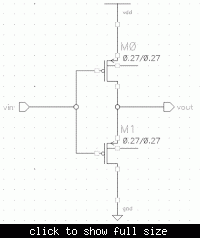navink
Newbie level 5

Hi All If we replace the nmos in inverter with pmos what will be the output i.e top pmos source is given to 3.3v supply and its drain is connected to bottom pmos source and bottom pmos drain is ground. Both gates are short and if input =0 what is the output.??





